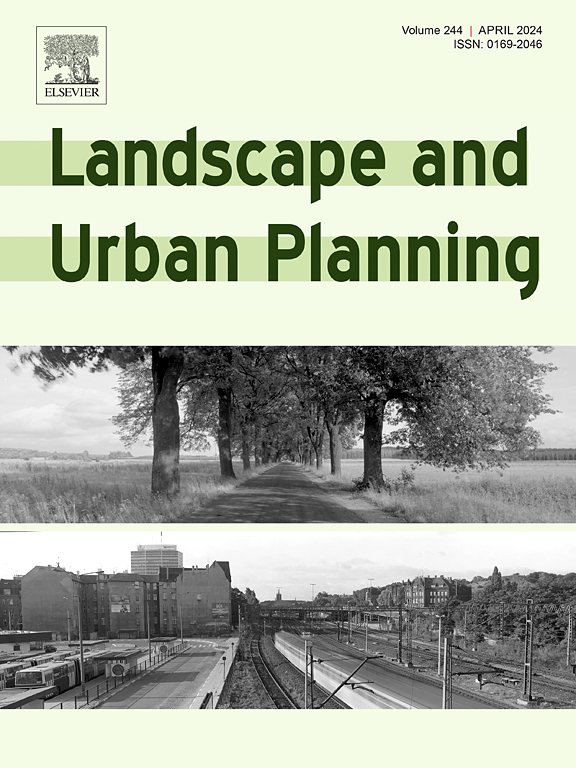Planting contexts affect urban tree species classification using airborne hyperspectral and LiDAR imagery
IF 7.9
1区 环境科学与生态学
Q1 ECOLOGY
引用次数: 0
Abstract
Different urban planting contexts, such as streets and parks, can lead to significant intraspecific biochemical and structural variations in trees. These variations present challenges for remote sensing-based tree species classification and effective urban forest management. However, few studies have explored how planting contexts influence the accuracy of remote sensing-based tree species identification in urban environments. This study introduced a planting context-specific modelling approach (i.e., models trained for street trees and park trees separately) for classifying seven dominant broadleaved tree species in the Brussels Capital Region, Belgium using airborne hyperspectral and leaf-on LiDAR data. This approach was compared to a traditional general modelling approach. Linear discriminant analysis with principal component analysis was employed to classify tree species at the individual tree level using different feature sets. Our results showed that a planting context-specific modelling approach with combined hyperspectral and LiDAR features achieved an overall accuracy (OA) of 84.2%. It improved the OA of LiDAR-based classifications by 7.6 and 8.9 percentage points for street trees and park trees respectively and of hyperspectral-based street tree species classification by 4.2 percentage points. The decreased discriminatory power of features in general models can be partly attributed to their sensitivity to planting context. We concluded that a planting context-specific modeling approach can enhance urban tree species classification, ultimately supporting improved urban forest management.
利用机载高光谱和激光雷达图像进行城市树种分类
不同的城市种植环境,如街道和公园,会导致树木种内生化和结构的显著变化。这些变化对基于遥感的树种分类和有效的城市森林管理提出了挑战。然而,很少有研究探讨在城市环境中种植背景如何影响基于遥感的树种识别的准确性。本研究引入了一种特定于种植环境的建模方法(即分别对行道树和公园树进行模型训练),利用机载高光谱和叶片上激光雷达数据对比利时布鲁塞尔首都地区的七种主要阔叶树进行分类。该方法与传统的通用建模方法进行了比较。采用线性判别分析和主成分分析相结合的方法,利用不同的特征集在单树水平对树种进行分类。我们的研究结果表明,结合高光谱和激光雷达特征的种植环境特定建模方法的总体精度(OA)为84.2%。将基于lidar的行道树和公园树分类的OA分别提高7.6和8.9个百分点,将基于高光谱的行道树树种分类的OA提高4.2个百分点。在一般模型中,特征的区分能力降低可以部分归因于它们对种植环境的敏感性。研究结果表明,基于不同种植环境的城市树种建模方法能够增强城市树种分类能力,最终为改善城市森林管理提供支持。
本文章由计算机程序翻译,如有差异,请以英文原文为准。
求助全文
约1分钟内获得全文
求助全文
来源期刊

Landscape and Urban Planning
环境科学-生态学
CiteScore
15.20
自引率
6.60%
发文量
232
审稿时长
6 months
期刊介绍:
Landscape and Urban Planning is an international journal that aims to enhance our understanding of landscapes and promote sustainable solutions for landscape change. The journal focuses on landscapes as complex social-ecological systems that encompass various spatial and temporal dimensions. These landscapes possess aesthetic, natural, and cultural qualities that are valued by individuals in different ways, leading to actions that alter the landscape. With increasing urbanization and the need for ecological and cultural sensitivity at various scales, a multidisciplinary approach is necessary to comprehend and align social and ecological values for landscape sustainability. The journal believes that combining landscape science with planning and design can yield positive outcomes for both people and nature.
 求助内容:
求助内容: 应助结果提醒方式:
应助结果提醒方式:


